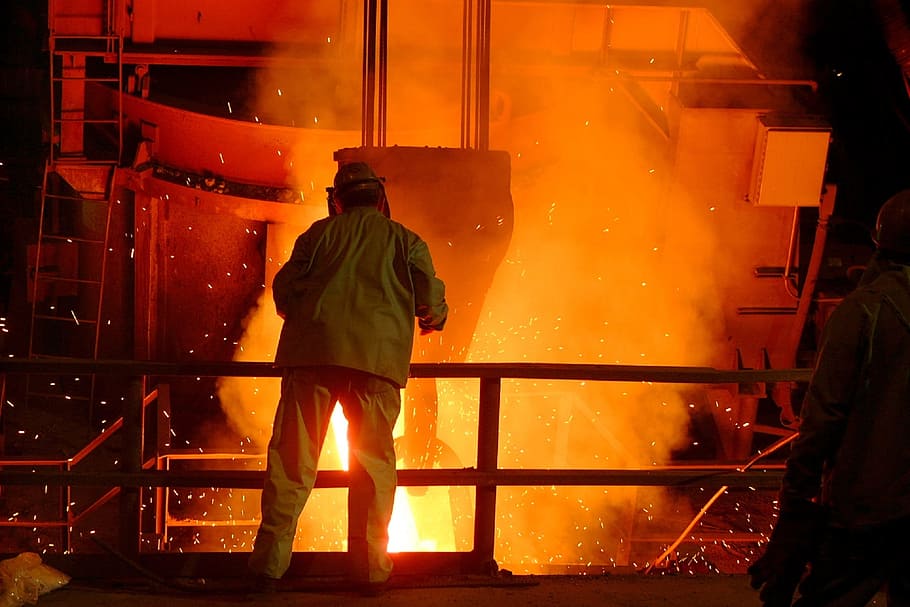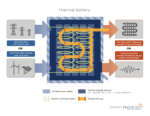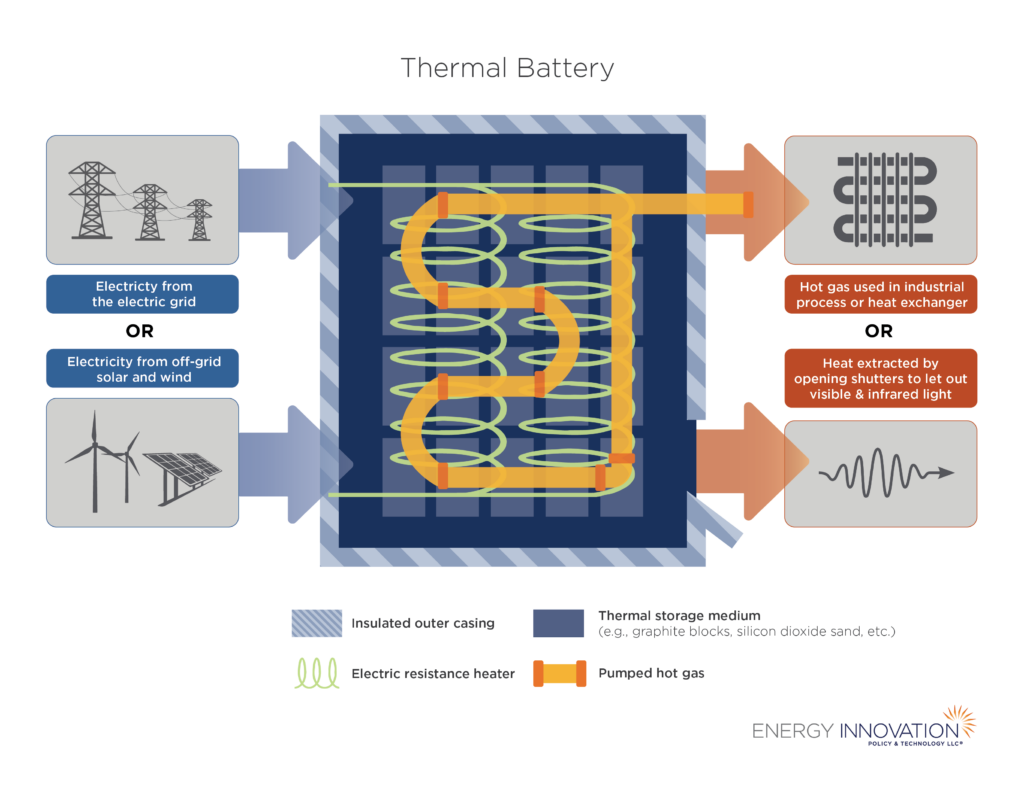The power and transportation sectors tend to dominate headlines when it comes to cutting greenhouse gas (GHG) pollution, but we need to tackle a large and growing emissions source to hit our climate goals: industry. Industrial processes—such as steel, cement, and chemical production—are projected to be the United States’ largest source of emissions by 2030. Thermal batteries have the potential to cut industrial greenhouse gas emissions while lowering the cost of electricity for industrial heating by 50-63 percent, making it cost-competitive with natural gas equipment.
While fossil fuels are currently used to generate almost all the heat needed in industrial processes, technological solutions like industrial thermal batteries can provide this heat while powered by clean energy. With the right policy support, we can economically scale up these technologies while cutting climate pollution at the speed and scale necessary to reach our emission reduction targets. Thermal batteries, also called heat batteries, convert electricity into heat, store the heat for hours or days, and release it when the energy is needed. Thermal batteries can make industrial heating electricity costs competitive with natural gas equipment while displacing 75 percent of fossil fuel use in U.S. industrial non-feedstock energy demand, roughly 11,600 petajoules per year. That’s equivalent to the total energy use of all homes in the top 12 states (Texas, California, Florida, New York, Illinois, Pennsylvania, Ohio, Michigan, North Carolina, Georgia, New Jersey, and Virginia) added together.



